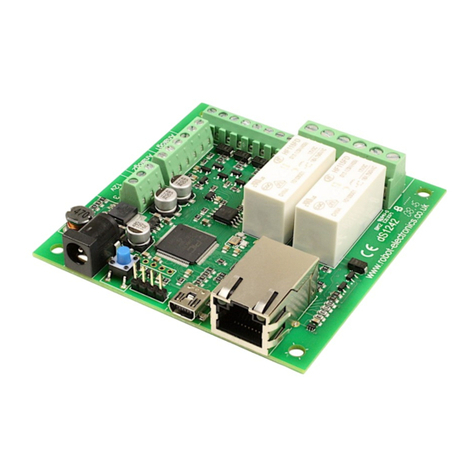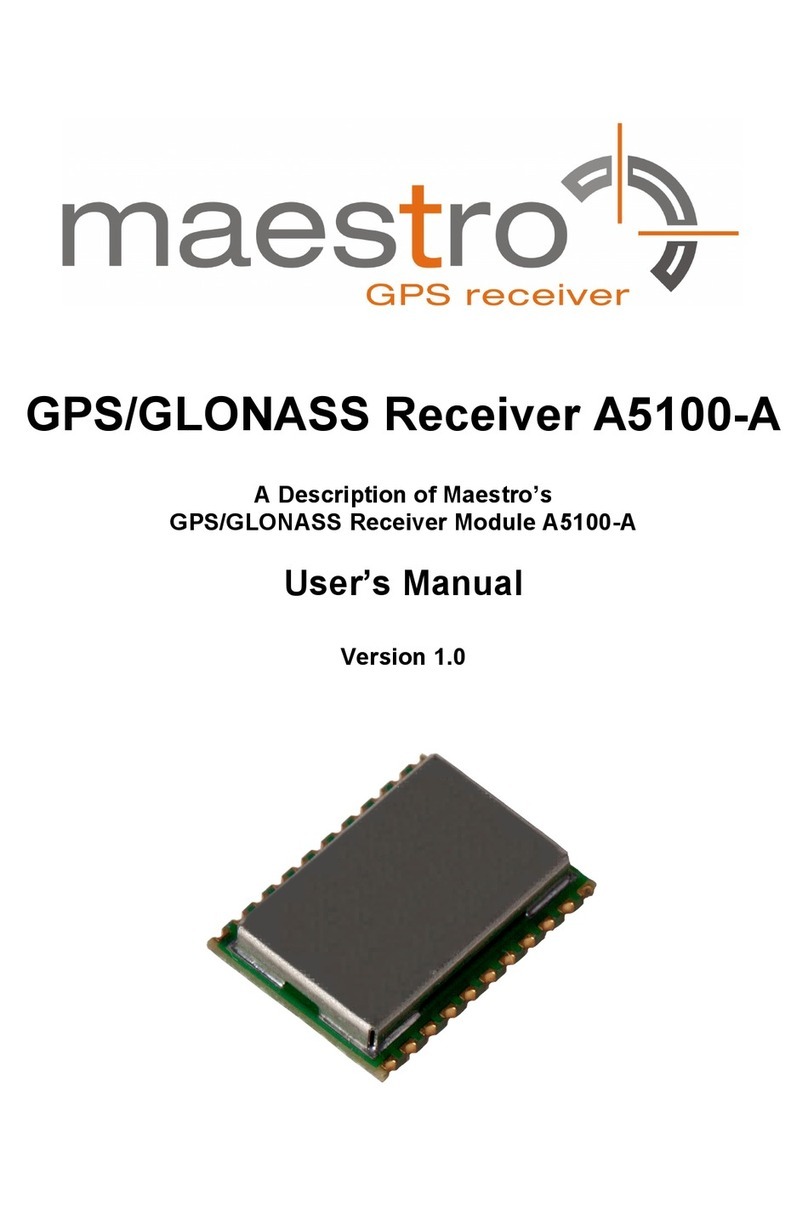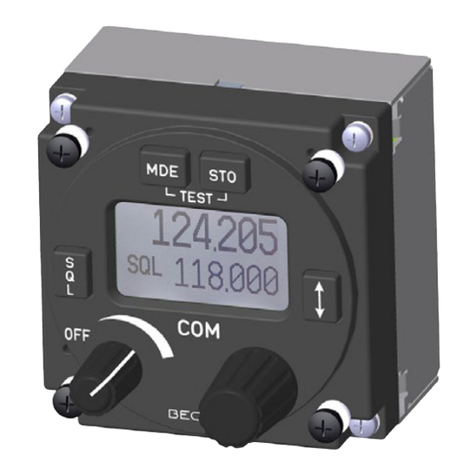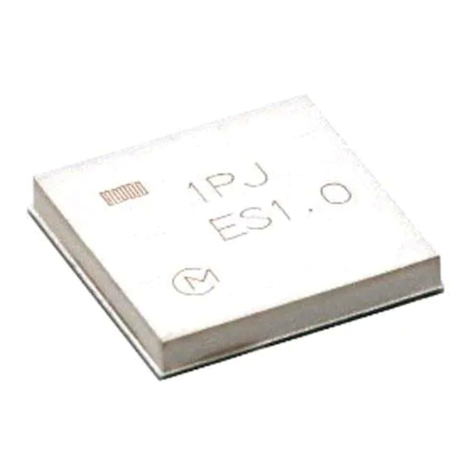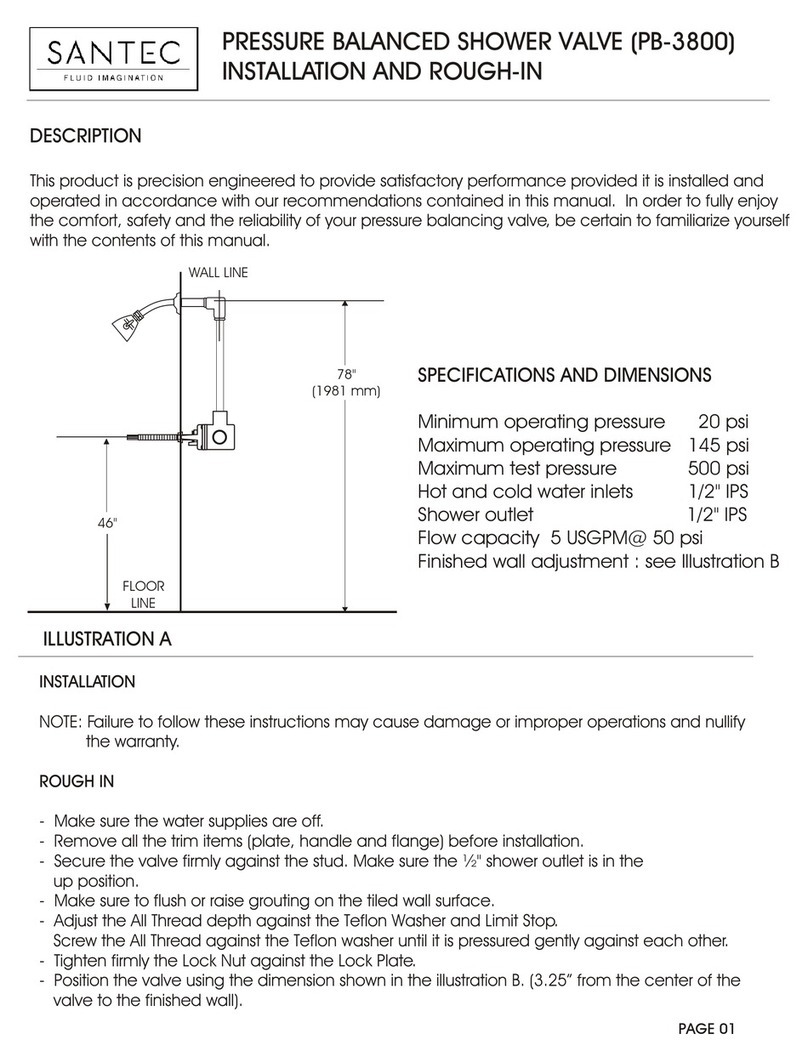DHC audioShare User manual

INSTALLATION GUIDE
for Professional Installers
v01r01-080505
Control Relay Module
(CRM)
© 2008 Digital Home Communications, LLC. All Rights Reserved.

audioShare Control Relay Module Installation Guide v00r01-090421.wpd 2
Important Safety Information
WARNING: To prevent fire or shock hazard, do not expose this equipment to rain or
excessive moisture.
FEDERAL COMMUNICATIONS COMMISSION (FCC) WARNING:
Unauthorized modifications to this equipment not only void the warranty, but also void the
user’s authority to operate it.
WARNING:TherearenouserorinstallerserviceablepartsinanyaudioShare®devices.
Donotdisassembleanydevicesorattempttorepairorreplacecomponents. Doingsomay
damage the device or cause it to cease functioning properly. The user warranty will also
be voided.
WARNING: Even though Cat. 5 wiring and RJ45 connections are used to interconnect
devices, the audioShare®system uses a proprietary networking scheme and is NOT
COMPATIBLE with Ethernet devices. Connecting any audioShare®compatible device
(wall stations, door stations, hubs, power injector modules or control relay modules) to
Ethernet compatible devices will result in damage to the audioShare®device, the Ethernet
device, or both. Resulting damage is not covered under the warranties of either type of
device.
WARNING: audioShare®devices contain complex electronic circuitry that is highly
sensitivetoelectrostaticdischarge(ESD). audioShare®unitshave been designed to shunt
electrostatic discharge away from these sensitive circuits. In order for this protection to be
fully effective, the system power supply must be connected directly to an
electrical/earthground. FailuretoproperlygroundtheaudioShare®powersupplywillvoid
the warranty and is in violation of the National Electrical Code (NEC).
WARNING: Use only the certified audioShare®power supply provided with the system.
Useofunauthorizedpowersuppliesmaycauseerraticordiminishedoperationandwillvoid
the warranty.
WARNING: It is common practice to acid wash exterior brick or stone walls or to power
wash homes with siding or stucco exteriors. Doing this with an exposed audioShare®
device will damage the unit. Resulting damage is not covered under the warranty. Always
be sure to remove the unit and protect the Cat 5 wires and the RJ45 connectors before
performing these washes.
CAUTION: TheaudioShare®systempowersupplyoperatesat50VDC,whichis present
on all system wiring and at each device connected to the system. Use caution when
installing, uninstalling or troubleshooting equipment. Disconnect system power supply
before installing, interconnecting, replacing or removing any audioShare®equipment. It is
possible for 50 VDC to still be present on audioShare®devices for several minutes after
power has been disconnected.

audioShare Control Relay Module Installation Guide v00r01-090421.wpd 3
NOTE: All audioShare®devices are protected from short circuits and overloads by Poly-
Resettable Fuses. These fuses reset only after removing power for several seconds.
Refer to section on Power Reset under Troubleshooting on page 22).
Table of Contents
ImportantSafety Information....................................................................................................2
Introduction...................................................................................................................................4
Chapter 1 System Planning......................................................................................................5
CRM Placement................................................................................................................5
CRMAddresses................................................................................................................5
Chapter 2 Mechanical Installation..........................................................................................6
Tools Required.................................................................................................................6
Chapter 3Wiring Information...................................................................................................7
Pre-Wiring..........................................................................................................................7
Termination.......................................................................................................................8
Wiring Topologies...........................................................................................................8
Home-Run Wiring with Hub.................................................................................8
Daisy-Chain Wiring with Power Injector Module (PIM)...................................9
Combination Home-Run and Daisy-Chain with Hub.........................................9
RJ45ConnectorWiring.................................................................................................10
Maximum Number of Units..........................................................................................10
CRMWiringDiagrams........................................................................................................11
Chapter 4CRM Configuration................................................................................................13
StatusIndicators................................................................................................................13
SoftwareConfiguration....................................................................................................13
CRMOperationModes.......................................................................................................16
Chapter5Troubleshooting.....................................................................................................22
PowerReset.....................................................................................................................22
DiagnosticSoftware......................................................................................................22
TechSupport...................................................................................................................22
Warranty – See User Guide
AppendixA-CRMStatus/DiagnosticCodes......................................................................23
StatusIndicators.................................................................................................................23
Error Codes.....................................................................................................................23
Appendix B - Specifications...................................................................................................24
Appendix C - Location Worksheet........................................................................................25
Contact Information................................................................................................................28

audioShare Control Relay Module Installation Guide v00r01-090421.wpd 4
Introduction
Welcome to the world of all-digital media networking. This is a companion guide to the
audioShare®Basic System Installation Guide. Please refer to that document for a complete
description of the audioShare®system.
audioShare®isthefirsttrulynetworked,direct-dialall-masteraudio(voiceandmusic)networkand
home automation control system. As such, it is probably unfamiliar to most installers so a brief
tutorial is in order.
Power, data and media buses are distributed to all units via Cat. 5 (or better) wiring. Although
standardEthernetwiringandRJ45connectorsareused,audioShare®usesaproprietarynetworking
scheme that is NOT COMPATIBLE with Ethernet. However, there are some devices in the
audioShare®family that include Ethernet connections for adapting to external computers and
networks. TheseconnectionsareclearlylabeledtodistinguishthemfromtheaudioShare®network
connections.
Power (50 VDC) is supplied on pins 4 and 5 of all RJ45 connectors of the audioShare®network,
except the uplink connector on hub model #ASH01.
Design precautions have been taken to prevent damage in case of mis-wiring. For example, the 50
VDC power is protected against accidental reverse wiring of pins 4 and 5. Additionally, data and
media buses are similarly protected. If the RJ45 wiring is backwards to standard, the worst that can
happen is the offending unit will not work properly. However, if wiring is completely wrong,
serious damage can occur. Please follow the wiring diagram carefully (see RJ45 Wiring on page
10) and test each run with a standard Ethernet cable tester before applying power to the system.
The system is further protected against Electrostatic Discharge (ESD) at each unit by several
semiconductor devices which are grounded via pin 4 (blue wire) of the Cat 5, back to the system
power supply. Therefore, it is absolutely essential to ensure that the system power supply is
properly grounded to the electrical system as called out in the National Electrical Code (NEC).
However,in ordertoprevent groundloopswhich createhumin anyaudio systemit isalsonecessary
to make sure that no other grounding occurs in the system other than at the system power supply.
Each unit in an audioShare®system has its own unique number or “address.” The Control Relay
Module (CRM) has a setof address selectorswitches inside the cover which can be set from address
201 through 239 to allow for up to 39 CRMs to be included in a given system.
For a complete list of audioShare®features, please refer to the User Guide. The latest version of
the User Guide can be downloaded in pdf format from our website at www.audioshare.net under
the Support tab.

audioShare Control Relay Module Installation Guide v00r01-090421.wpd 5
SYSTEM PLANNING
Before installation begins, in fact, before the wiring phase of construction even begins, we
recommend that you plan where each type of unit will be installed. This will greatly simplify the
system configuration after installation. Appendix C is a Location Worksheet that will help
identify where each unit is placed in the home along with other pertinent information needed during
the configuration process. Make additional photo copies as needed. A complete list of units is
found in the audioShare®User Guide.
CRM Placement
CRMs may be placed anywhere in the audioShare®system where control of external devices such
assecuritygates,garagedoors,yardlights,security(alarm)systems,thermostats,irrigationsystems,
etc. are located. The only site preparation required is the installation of a Cat 5 cable from the
audioShare®system, in any configuration of home run and/or daisy chain (see the audioShare®
Basic Installation Guide). Power and control signals are supplied to the CRM over the Cat 5 so
no other wiring is needed. The CRM includes dry relay contacts, both normally open (N.O.) and
normally closed (N.C.), to operate any device up to 120 VAC or 30 VDC at up to 2 Amps. Relay
operation can be momentary or continuous and is completely configurable from any wall station.
There are 14 pre-defined modes of operation as well as a user definable mode which can be
configured from any personal computer attached to the system via an Ethernet port (ASPEM or
ASHB3).
CRMs also accept input signals from any external device that provides a switch or relay closure or
a TTL voltage level from 0 - 24 VDC. These input signals may be used to send control information
to the audioShare®system to acknowledge the completion of an operation, or to trigger an audible
signal,orto start or stop theoperationofanother external device,orwhateverotherpurpose the user
needs.
CRM Addresses
Use a logical address numbering system, one that will be easy for the users to remember. There are
up to 39 addresses available for CRMs, 201 through 239. The address book feature allows users to
assign names the addresses for easier access.

audioShare Control Relay Module Installation Guide v00r01-090421.wpd 6
Mechanical Installation
Tools Required
The following tools are required for the installation of various audioShare®devices:
• Phillips Screwdriver - small tip
• Wire Stripping Tool for Cat. 5 wire preparation.
• Crimping Tool for RJ45 connector installation.
• Ethernet Cable Tester for Cat. 5 cable and RJ45 connector installation checking.
• Various pliers, wire cutters and screwdrivers.
• Multi-Meter (DMM or mechanical movement) with DC Volts, Resistance and Continuity
functions.
CAUTION:BeforeinstallinganyaudioShare®unitsoraccessorymodules,makesurethe
power supply is disconnected to prevent accidental damage to the units and to prevent the
possibility of electrical shock.
WARNING: It is common practice to acid wash exterior brick or stone walls or to power
wash homes withsiding or stucco exteriors. Doing this with an audioShare®CRM exposed
to the wash will damage the unit. Resulting damage is not covered under the warranty.
Always be sure to remove the unit and protect the Cat 5 wires and the RJ45 connectors
before performing these washes.
The CRM should be installed where it will be protected from weather, excessive heat and moisture,
and tampering by unauthorized persons. There are no particular orientation issues. The unit is
completelyself-contained andispoweredfromthe main audioShare®systempower supply via the
Cat.5 (or other) cable.

audioShare Control Relay Module Installation Guide v00r01-090421.wpd 7
Wiring Information
WARNING: audioShare®devices contain complex electronic circuitry that is highly
sensitive to electrostatic discharge (ESD). audioShare®CRMs have been designed to
shuntelectrostaticdischarge awayfromthesesensitivecircuits. Inorderfor thisprotection
to be fully effective, the system power supply must be connected directly to an
electrical/earthground. FailuretoproperlygroundtheaudioShare®powersupplywillvoid
the warranty and is in violation of the National Electrical Code (NEC).
NOTE:Nospecialprecautionsneedtobetakenwhen runningCat5wiring astoproximity
to other electrical wiring or appliances.
The audioShare®system is designed for optimum performance using Cat. 5 (or better) eight-
conductor cables (4 twisted pairs). This is the recommended wire type. However, other types of
twisted pair cables such as Cat. 3 will work with a decrease in the maximum length of a run. Six-
conductor, 3 pair cables may also be used (Nutone IW-6 for example), but limit the system to only
one media bus unless the ASA468 Retrofit Adapter is employed. Use of non-recommended wire
types should only be considered when upgrading existing installations where old wiring is too
difficult or too expensive to replace. For more information regarding retrofit wiring visit our
website or contact DHC Tech Support.
Pre-Wiring
Pre-wiring for a CRM is as simple as running a Cat 5 (or equivalent) from an audioShare®hub or
PIM or PEM in a home run or daisy chain configuration to the location where the CRM will be
connected to the devices needing to be controlled.
The Cat. 5 may be daisy chained through the CRM to another audioShare®device or may be the
end of the line with a network terminator installed in the unused RJ45 port.
If the CRM is the only device that is or will ever be attached to that run, the wiring may be as little
as 2 twisted pairs (no flat, un-twisted ribbon cable is permitted). The system power (RJ45 pins 4
& 5) and the Data Bus (RJ45 pins 7 & 8) are the only required connections to operate a CRM. Of
course, it is highly recommended that Cat. 5 be used in an audioShare®system whenever possible.
TheCRMshould be attached to theexternaldevice(s)by the appropriate length andtypeofwire (up
to 14 ga.) suited to that particular operation. The terminals inside the top cover are clearly labeled.
A ground terminal (#1) provides a direct connection to earth ground (if needed) via the Cat. 5 to the
system power supply which should be connected to the electrical (earth) ground. The ground
terminalis notintendedtobe grounded at the CRM. Doingsowillcreate a ground loop whichcould
affect system operation.
As far as power consumption is concerned, ten CRMs are the equivalent of one Wall Station.

audioShare Control Relay Module Installation Guide v00r01-090421.wpd 8
Terminator
Terminator
Terminator
Terminator
Home-run wiring from audioShare®
devicesto audioShare®Stackable Hub.
Home-run wiring needs terminator in 2nd
Networkportof au d io Sh ar e ®device.
Use standard CAT 5e or
CAT 6 wire.
Single power supply
plugs directlyinto HUB
and providespower over
CAT 5e or CAT 6 to all
audioShare®devices.
audioShare®System Wide Wiring Diagram
Home-Run Wiring Design with Hub
Terminator
Terminator
Terminator
Termination
End-of-run network terminators balance the load and guarantee data integrity over the entire
network. Because of the true networking design of audioShare®and because of the guaranteed
maximum distance specification, terminators must be used at the end (last unit) of any run.
Terminators must also be installed on the unused port of the Power Injector Module (PIM) or the
Power/EthernetModule(PEM). Thehubisterminatedinternally,thereforeunusedhubportsshould
not be terminated.
Wiring Topologies
Thefollowingdiagramsshow examplesof varioustopologies thatmaybe used. Althoughonlywall
stations are shown, the information applies to all audioShare®devices attached to the network.
Please refer to Maximum Number of Units, page xx.
NOTE: Unused ports on the hub SHOULD NOT be terminated. An unused port on the
Power Injector Module (PIM or PEM) MUST BE terminated (see Termination, page x).

audioShare Control Relay Module Installation Guide v00r01-090421.wpd 9
Terminator
Daisy-chainwiringfrom
audioShare®devices to other
audioShare®devices. The last
audioShare®device in the daisy-
chain needs a terminator in 2nd
Network port of audioShare®device.
audioShare®supports up
to 8 devices per daisy-
chain wire run.
Use standard CAT 5e or
CAT 6 wire.
Single power supply plugs
directlyonto CAT 5e or
CAT6 wire using the
Power Injector Module
(PIM) and provides power
over CAT 5e or CAT 6 to
all audioShare®devices.
audioShare®System Wide Wiring Diagram
Daisy-Chain Wiring with PIM
Terminator
Terminator
Terminator
Terminator
Terminator
Terminator
Home-run wiring from audioShare®
devices to audioShare®Stackable Hub.
Home-run wiring needsterminator in 2nd
Network port ofaudioShareTM device.
Daisy-chain wiring from
audioShare®devices toother
audioShare®devices. Thelast
audioShare®device in the daisy-
chain needs a terminator in 2nd
Networkportof au di o Sh ar e ®device.
audioShare®supports up
to 8 devices per daisy-
chain wire run.
Use standard CAT 5e or
CAT 6 wire.
Single power supply
plugs directly into HUB
and providespower over
CAT 5e or CAT 6 to all
audioShare®devices.
audioShare®System Wide Wiring Diagram
Combination Home-Run and Daisy-Chain with Hub

audioShare Control Relay Module Installation Guide v00r01-090421.wpd 10
Male RJ45 Wiring
RJ45 Wiring
audioShare®usestheEIA/TIA568B,AT&T258AEthernet wiringstandard (seebelow). Test each
cable connection with a standard Ethernet cable tester to ensure proper operation.
Maximum Number of Units
Total system capacity is limited to 255 unit addresses, but all addresses above 200 are reserved for
door stations, special home automation units and other control functions (CRMs, for example) as
wellas futureexpansion. Therefore,a maximumof200 wallstations and/orAudioAccess Modules
(AAM) can be installed in a given system. Door stations count in the upper 55 reserved addresses
(240-247). CRMs also count in the upper 55 addresses (201-239).
The capacity of a single hub is 16 units (up to 5 per port). The capacity of a PIM/PEM is 16 units
(up to 8 per leg). Both of these limitations are based mostly on the capacity of the power supply
which is rated at 130 Watts. It also takes into account the amperage rating of the Cat. 5 wire and
the maximum length of 500 ft. (150 meters).
CRMs use one tenth the power of a wall station, therefore ten CRMs are equivalent to one wall
station (one unit).

audioShare Control Relay Module Installation Guide v00r01-090421.wpd 11
CRM Wiring Diagrams
Controlling Other Devices with the CRM
The following diagram is for connecting the CRM to control a device using normally open (N.O.)
or normally closed (N.C.) Operation. The device power supply is the one provided with whatever
device is to be controlled. It may or may not be integral to the controlled device.
Controlling the CRM with Other Devices
The CRM can also be controlled by external devices. Operation in this mode allows the CRM to
signal the rest of the audioShare®system that an outside device is requesting attention. The
software can be configured by the user to respond to the external stimulus in whatever manner is
desired. A few examples of these options include sounding a warning signal that an event has
occurred; establishing an intercom or music broadcast between wall stations or between a door and
wall station(s); turning on or off a light, appliance, heating/air conditioning system, lawn sprinkler,
etc.; arming/disarming a security system. The possibilities are virtually unlimited.
CRMs accept either a normally open (N.O.) switch/relay closure or TTL voltage levels as input
stimuli. The following diagrams show examples of these types of interfaces.

audioShare Control Relay Module Installation Guide v00r01-090421.wpd 12
NOTE: CRMs accept TTL input signals with the following parameters:
Low Logic Level = -0.5VDC to +0.7VDC
High Logic Level = 1.4VDC to 24VDC

audioShare Control Relay Module Installation Guide v00r01-090421.wpd 13
CRM Configuration
audioShare®CRMs come pre-configured from the factory with the latest software available at the
time of shipment. The only additional configuration required is to select the address as discussed
in CRM Addresseson page 5. If two or more CRMs are set to the same address, the red LED will
flash indicating a duplicate address has been set. See CRM Status/Diagnostic Codes on page 21
To set the address, use a small blade screwdriver to set the rotary encoder switches inside the top
cover of the CRM. Remove the top cover by squeezing the sides indicated by the arrows in the
example below.
The most significant digit is assumed to be 2, meaning address 200. The switches select the most
(MSB) and least (LSB) significant of the two remaining digits as labeled on the circuit board. The
allowable range is from 01 to 39. Setting the switches to anything outside of that range will result
in a “No Response” error when trying to access the module from any of the wall stations. In the
photo below, the switches are set to 15. The resulting address, then, is 215.

audioShare Control Relay Module Installation Guide v00r01-090421.wpd 14
Status Indicators
There are 3 status indicators on the CRM. The red light indicates the general status of the CRM.
See CRM Status/Diagnostic Codes on page xx). A blue light on the output indicates that the N.O.
relay contacts are closed. A blue light on the input indicates that the relay/switch input is closed or
that the TTL input is receiving a logic High state.
CRM Operation Modes
The following is a list of preset operating modes which can be selected from any wall station. If
none of these modes work for your application, you can setup your own configuration fromany PC
connectedtothesystemusingtheconfigurationsoftwaresuppliedwiththeCRM(alsodownloadable
from our website).
Mode 1 - Momentary 1 - operates when addressed until preset timeout, 3 sec.

audioShare Control Relay Module Installation Guide v00r01-090421.wpd 15
Appendix A
CRM Status/Diagnostic Codes
The following is a list of diagnostic status and failure codes for audioShare®CRMs as displayed
by the red LED. Contact DHC Tech Support for assistance.
Status Indicators
NOTE: The first two codes only apply to unprogrammed units. Since units are pre-programmed
at the factory prior to shipping, you should never see the first two diagnostic codes. If you do
encounter this situation it means the unit is unprogrammed. Simply allow it to complete its
diagnostic test sequence, then follow the Software Configuration instructions on page xx.
Quick repeating single flash = Diagnostic test in progress
Quick repeating double flash = Ready to program (diagnostic test passed)
Slow (one second) on-off-on-off, etc. = Programming in progress
Steady on = Done programming, ready for normal operation
Error Codes
The format of the error codes is a prefix followed by a function code as indicated by the flashing
LED. The prefix indicates the type of error (hardware or software) and the function code indicates
the specific function that failed. For example, in a 1-3 code the LED will flash once with a short
pause followed by 3 flashes followed by another pause. This sequence will repeat indefinitely. If
you encounter any of these diagnostic codes except for 2-3, contact DHC Tech Support. If you
encounter code 2-3, change the address switches on one or more of the CRMs to a different, unused
address.
Prefix 1 = Hardware error
Prefix 2 = Software error
Code # Meaning
1-1 Memory error
1-2 Network error
2-1 Program error
2-2 Copyright error (pirated software)
2-3 Duplicate CRM address

audioShare Control Relay Module Installation Guide v00r01-090421.wpd 16
Appendix B
Specifications
System Power Supply
Input 110-240VAC, 50-60Hz., 130 Watts Max.
Output 50VDC, 2.6A Max.
Short Circuit/Overload Protection Internal, Automatic
Output Connection Coaxial, Male (5.5mm O.D., 2.5mm I.D., center pin +)
System
Maximum Cable Length (from Hub to farthest unit or
between two farthest units when using a PIM/PEM) 500' (150M)
Cable Type (recommended) 8 conductor Cat 5 or better (up to 500')
Cable Type (alternate) - Note 1 4, 6 or 8 conductor, twisted pairs or Cat 3 (up to 300')
Maximum Addressable CRMs per System 39
Maximum Addressable Units per System (Wall & Door
Stations, CRMs, AAMs, etc.) 255 (using 16 hubs, 16 units per hub)
Control Relay Module (CRM)
Power Consumption (powered from Cat. 5) Less than 0.5 W. (output relay energized)
Output Relay N.O., N.C. Contacts, 120 VAC or 30 VDC @ 2 A.
Input (Relay or Switch Closure) N.O. (close contacts to operate)
Input (TTL) Low = -0.5 to +0.7 VDC, High=+1.4 to +24 VDC
Connections
Interface to external devices (1) Phoenix type screw terminal strip, 8-position
System Network (2) RJ-45, female, 8-pin (Data, Media Buses & Power Supply)
User Interface
Status Indicator Red LED
Output Activity Blue LED
Input Activity Blue LED
Address Selector Switches (2, MSB, LSB) Rotary BCD Encoder, screwdriver adjusted
Backup Memory Flash EEPROM type (no battery required)
Physical Dimensions
CRM 3.25"L, 2.5"W, 1"H
System Power Supply 7.75"L, 3.5"W, 2"H
Notes:
1. Operation with non-standard 4, 6 and some 8 conductor wires requires the use of an ASA468 Adapter at each end of the
cable.
2. Powerforspecificdevices to beoperatedby the CRMis suppliedbythe user and depends on theparticularneeds of those
devices.

audioShare Control Relay Module Installation Guide v00r01-090421.wpd 17
Appendix C
audioShare®Location Worksheet
Unit Unit Unit Type Hub/PIM Terminated Chime Sw. 4
Address Location (wall, door, etc.) Port # (Y/N) (On/Off)

audioShare Control Relay Module Installation Guide v00r01-090421.wpd 18
Notes

audioShare Control Relay Module Installation Guide v00r01-090421.wpd 19
Notes

audioShare Control Relay Module Installation Guide v00r01-090421.wpd 20
The First all digital Voice and Music system
CONTACT INFORMATION
Main Office
DHC, LLC
873 S. Orem Blvd., Suite 1
Orem, UT 84058
Phone: 1-888-406-7776
FAX: 1-801-615-7189
Installer Tech Support
e-mail: [email protected]
Phone: 1-888-406-7776
FAX: 1-801-615-7189
Sales e-mail: [email protected]
Phone: 1-801-615-7186
Website www.audioshare.net
dealers.audioshare.net (authorized dealers and installers only, must have password)
Table of contents
Popular Control Unit manuals by other brands
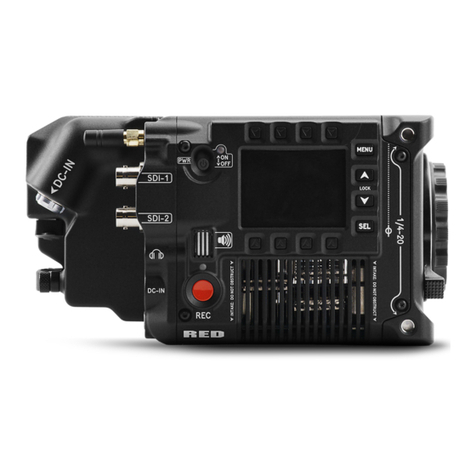
RED
RED CONNECT MODULE Operation guide
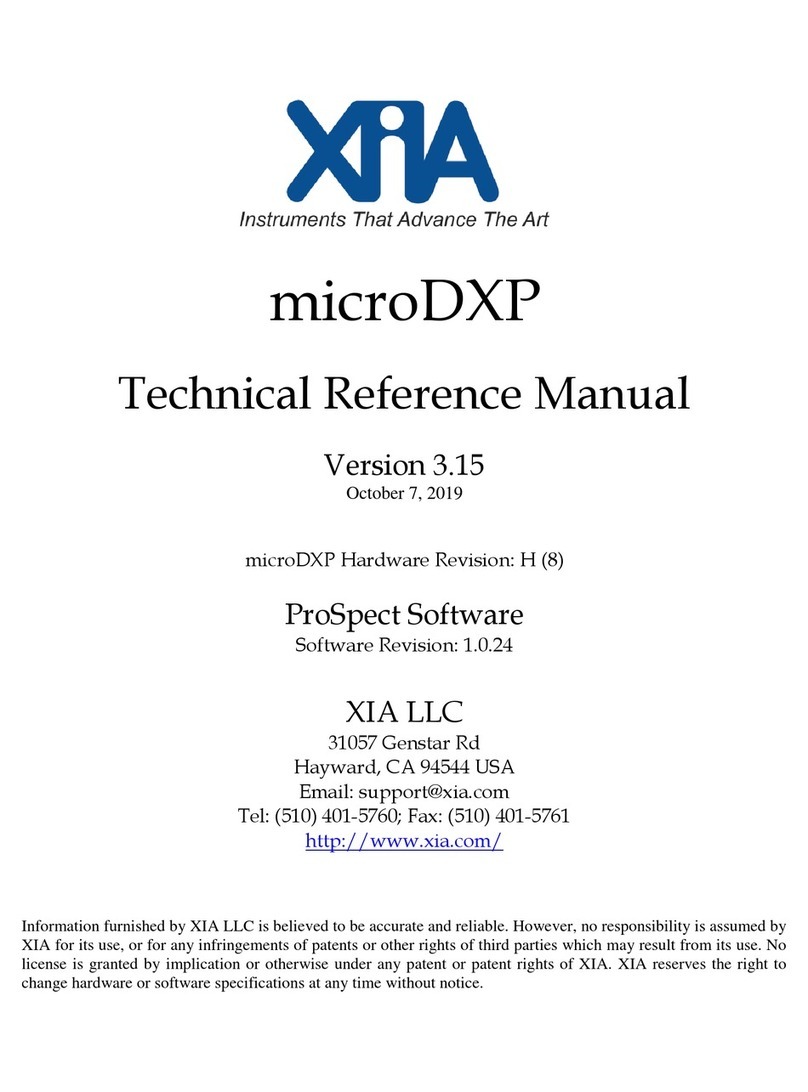
XIA
XIA microDXP Technical reference manual
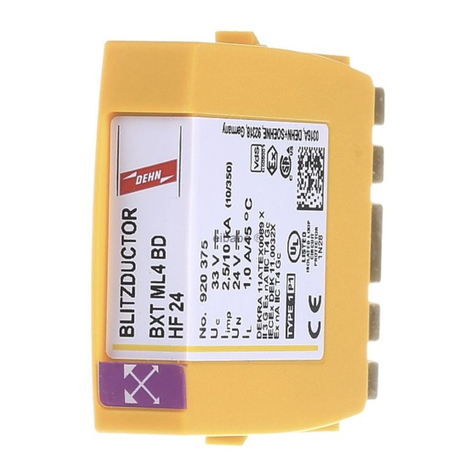
dehn
dehn Blitzductor BXT ML4 BD EX 24 installation instructions

Clamper
Clamper Solar SB 1000 18kA 3-4E/2S installation guide
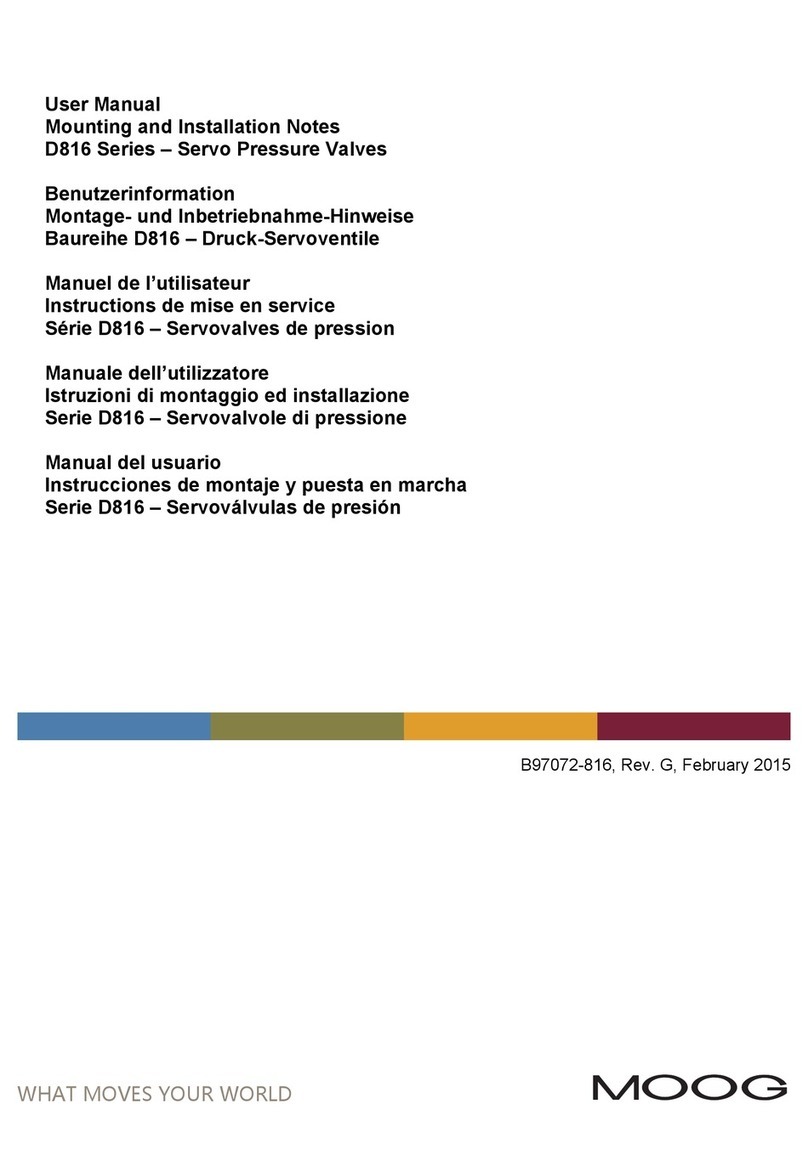
Moog
Moog D816 Series Mounting and Installation Notes
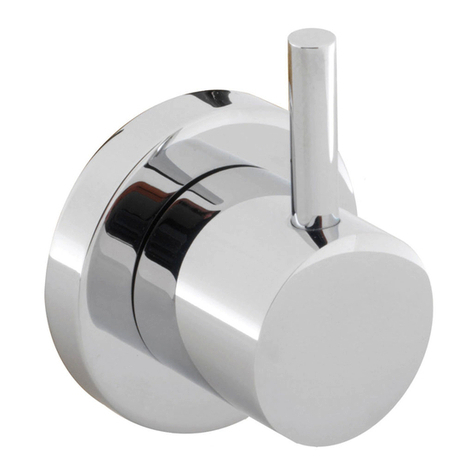
Crosswater
Crosswater KL0007WC installation instructions
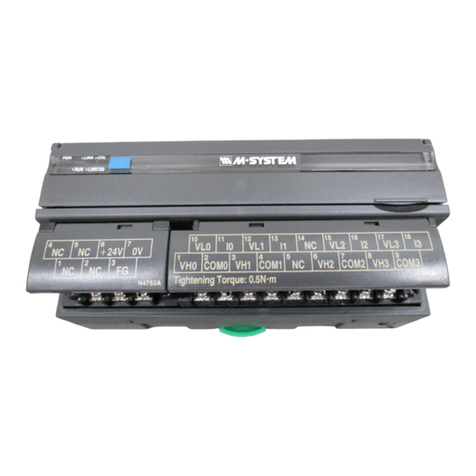
M-system
M-system R7M-DC16B instruction manual
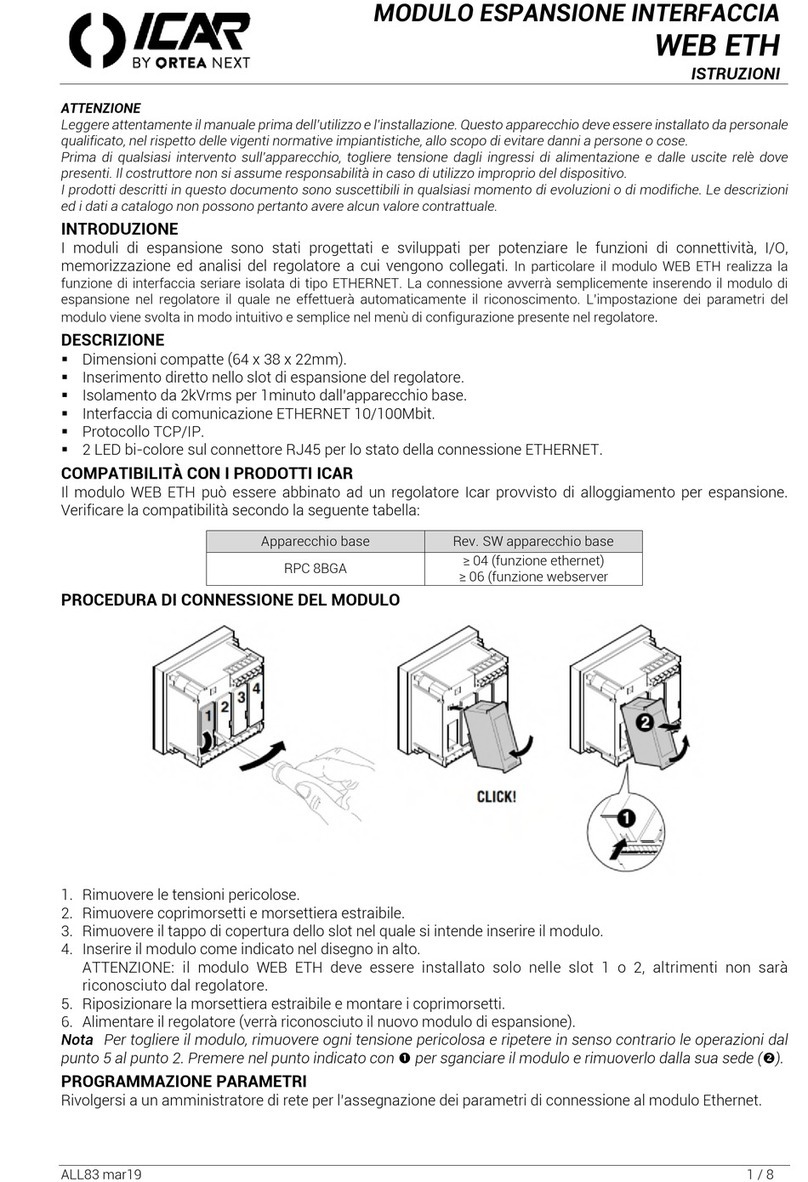
ORTEA NEXT
ORTEA NEXT ICAR WEB ETH instructions
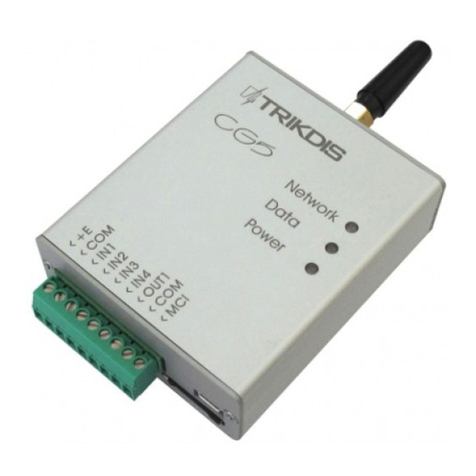
Trikdis
Trikdis CG5 installation manual
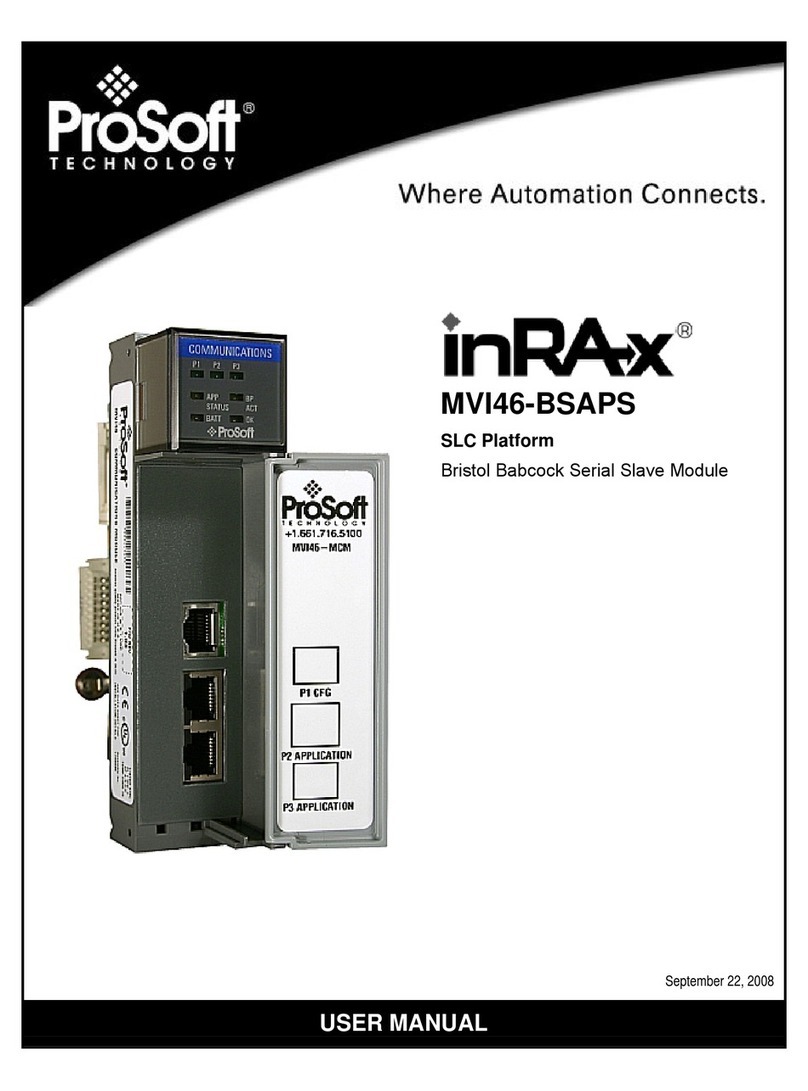
ProSoft
ProSoft inRAx MVI46-BSAPS user manual
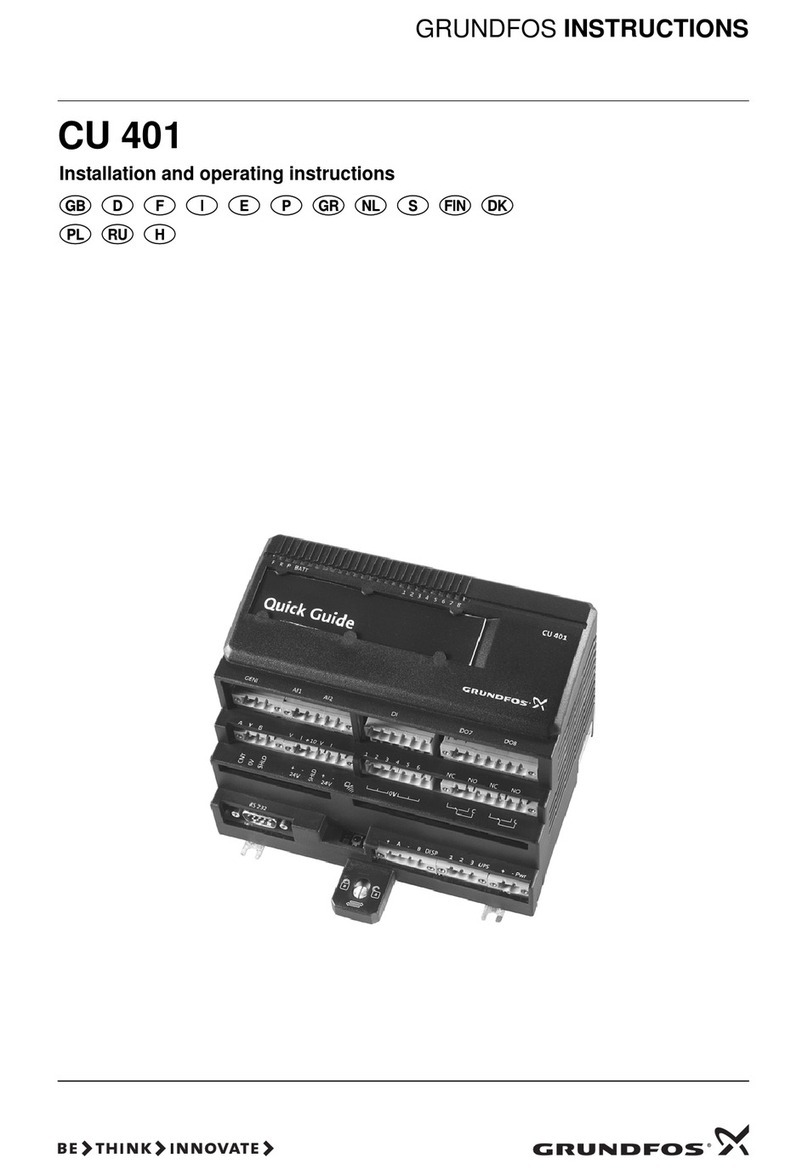
Grundfos
Grundfos CU 401 Installation and operating instructions
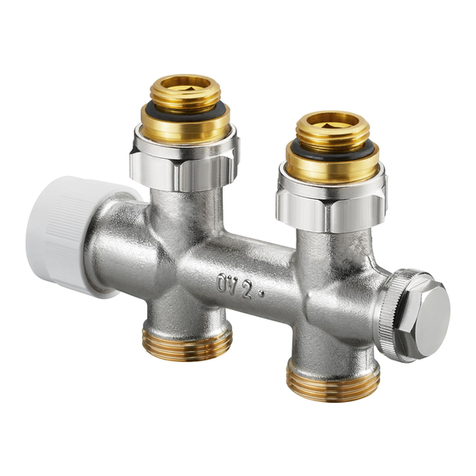
oventrop
oventrop Multiblock T Installation and operating instructions for the specialised installer
